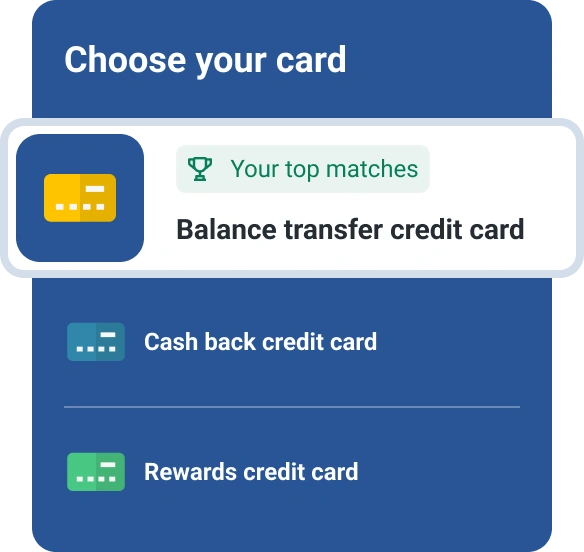Is There a Limit on Balance Transfers?
Quick Answer
Your balance transfer limit will determine how much money you can transfer to a credit card. The limit may depend on your card’s credit limit, your creditworthiness and the card issuer’s balance transfer policies.

Credit card balance transfers are often limited to an amount equal to the account's credit limit. You typically can't transfer a balance greater than your credit limit—and you won't know your credit limit until you're approved for the account. Your credit card may also have a balance transfer limit that's lower than its credit limit.
How a Balance Transfer Works
A balance transfer allows you to transfer debt in your name onto a credit card. Moving debt―including the balances of other credit cards—from one account to another can be beneficial when your credit card has a lower interest rate, especially when there's an introductory 0% annual percentage rate (APR) offer on transferred balances.
You may be able to get a balance transfer offer when you open a new credit card—these are called balance transfer cards—but your current card issuers will sometimes extend a balance transfer offer as well.
When you request a balance transfer, your card issuer will send a payment to the other credit card issuer. You may also be able to use a balance transfer check or transfer a balance to your checking account if you want to pay down and transfer other types of debts.
The balance will now appear on your credit card, plus a balance transfer fee (many cards charge a 3% or 5% fee on the amount you transfer) and will accrue interest based on your balance transfer APR.
If you have a promotional 0% APR balance transfer offer and can pay off the balance before the promotional period ends, you won't pay any interest on your transferred balances. However, if a balance remains at the end, it will accrue interest based on your standard balance transfer APR, which is often the same as your purchase APR.
What's the Maximum Balance Transfer You Can Do?
The amount of money you can transfer will depend on your credit card's balance transfer limit and the card's terms and conditions.
The maximum amount you can transfer may be the card's credit limit (minus any existing balance already on the card). However, you still won't be able to transfer this entire amount if you have to pay a balance transfer fee.
Card issuers may also give you a lower balance transfer limit, which could be based on your creditworthiness and your card's credit limit. Some card issuers also have a general limit. For example, your balance transfer limit may be capped at $7,500 even if your card has a much higher credit limit.
What Credit Score Do You Need for a Balance Transfer?
Your credit score won't impact your ability to request a balance transfer. However, if you're applying for a new balance transfer card, you may need a good credit score—a 670 or higher FICO® ScoreΘ—if you want to get approved for a card with a 0% APR offer.
Your credit score can also impact your card's credit limit and balance transfer limit. So, even if you're approved, you might not be able to transfer a large balance if you have poor credit. While you could transfer a debt, pay it down and then transfer another, you may only get the promotional APR for transfers that you completed within a limited period after opening a new card.
Is a Balance Transfer the Right Choice for You?
A balance transfer could be a good option if you're working to pay down high-interest debts and can qualify for a card with a low APR offer and high balance transfer limit. By limiting how much interest accrues, you can save money and pay off the balances faster. However, consider how much you'll have to pay in balance transfer fees and compare that to your potential savings.
Also, think about why you have balances to transfer in the first place. If you have credit card debt because of a one-time emergency, such as medical bills, then a balance transfer might help you get your finances back on track. But if you tend to use your credit cards often and build up a balance, then a balance transfer won't help you address the main issue—overspending. You could wind up deeper in debt if you transfer balances and then overspend with the cards again.
Alternatives to a Balance Transfer
There are many tools and strategies for paying off debt. If a balance transfer might not make sense for you, consider some alternatives:
- Other types of debt consolidation: Use a debt consolidation loan or another type of installment loan to pay off and consolidate debts. While you won't receive a 0% APR offer, you might be able to get a lower interest rate, fixed monthly payment and a specific payoff date.
- Debt snowball or avalanche: Rather than taking out new loans or moving your debt around, you could strategically pay off your current accounts. The snowball strategy involves paying off the debt with the lowest balance first, which can be rewarding and encouraging. The avalanche strategy is when you pay off the balance with the highest interest rate first, which can save you the most money overall.
- Debt management plan: If you're struggling to budget and afford your monthly bills, consider meeting with a credit counselor to discuss your options. The counselor may be able to put you on a debt management plan (DMP), which can lower your credit cards' interest rates or payments and help you pay off the balances within three to five years. However, you might not be able to use or open credit cards during this time.
Check Your Credit and Balance Transfer Card Offers
If you're considering a balance transfer card, checking your credit first could be a good idea. Experian offers a free credit report and credit score, and free ongoing tracking once you sign up. You can also use Experian's card comparison tool to see which balance transfer cards you can likely qualify for and compare the cards' current balance transfer offers.
Best balance transfer cards
Need to consolidate debt and save on interest? See if you qualify for intro offers like 0% intro APR up to 21 months based on your FICO® Score.
See your offersAbout the author
Louis DeNicola is freelance personal finance and credit writer who works with Fortune 500 financial services firms, FinTech startups, and non-profits to teach people about money and credit. His clients include BlueVine, Discover, LendingTree, Money Management International, U.S News and Wirecutter.
Read more from Louis

